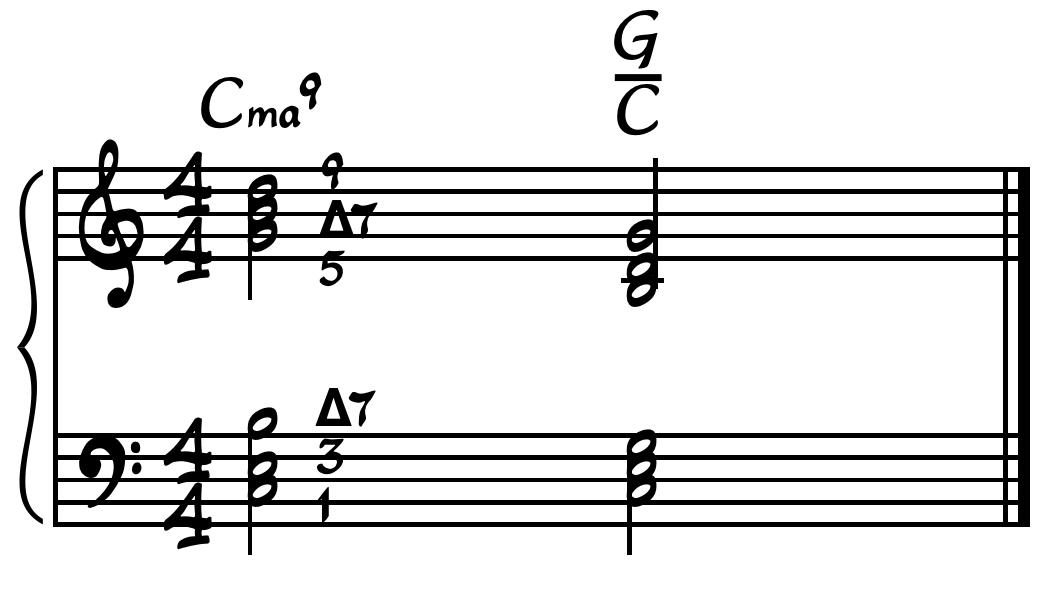Oscar Peterson and his love for Arpeggios
Arpeggios are a considerable part of Oscar Peterson's improvisations. They are one of those devices he borrows from classical piano literature that allows him to expose his incredible technique. Oscar played a lot of classical music as a child and also took classical piano lessons, so it is only natural that he uses those ideas and techniques when playing jazz.
Arpeggio Lick No. 1
Oscar frequently uses this lick while running up and down the keyboard. What makes it sound great is that he uses these "broken chord" arpeggio runs as an upper-structure chord. That's what makes them sound "jazzy," interesting, and impressive when played very fast.
The video below shows me performing the lick. (It is in YouTube Shorts format.)
The Upper Structure Chords Explained
In the video, I use a G major triad as the base for the arpeggio. The G triad serves as an upper structure for three different chords. For each underlying chord, the notes of the G triad represent a different scale degree.
In order to make use of this idea in all keys we need to understand which major triad to place above the lower chord to get the desired chord extensions. Let's check out how this works.
[G over C] = Cma9
Placed above the C major triad, the notes of the G major triad give us the chordal 5th, ∆7 and 9th (as demonstrated below).

Formula to find the upper structure major triad for a Xma9 chord:
The upper structure major triad’s root is a perfect fifth above the bass note.
[G over F7] = F13(#11)
Placed above the F7 chord, the notes of the G major triad give us the chordal 5th, ∆7, and 9 (as demonstrated below).

Formula to find the upper structure major triad for an X13(#11) chord:
The upper structure major triad’s root is a major second above the bass note.
[G over B7] = B7Alt
Placed above the B7 chord, the notes of the G major triad give us the chordal #5th, 1, and #9 (as demonstrated below).

Formula to find the upper structure major triad for an X7Alt chord:
The upper structure major triad’s root is a tritone above the bass note.
